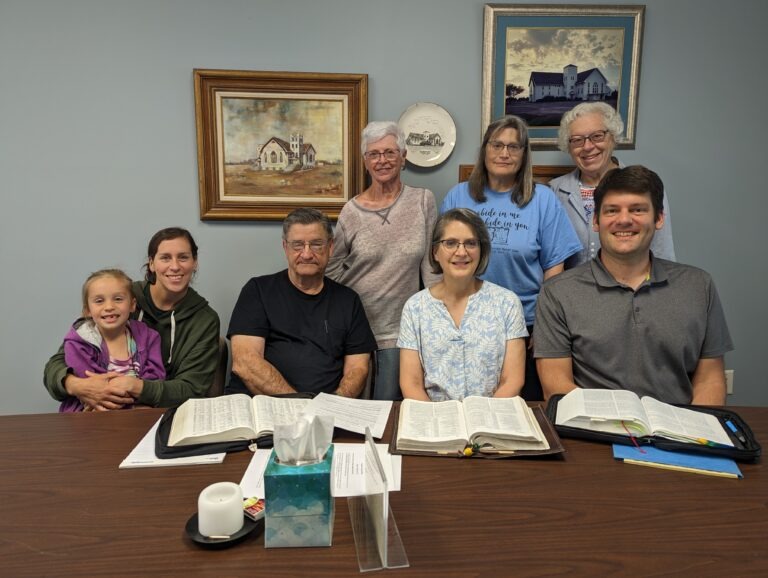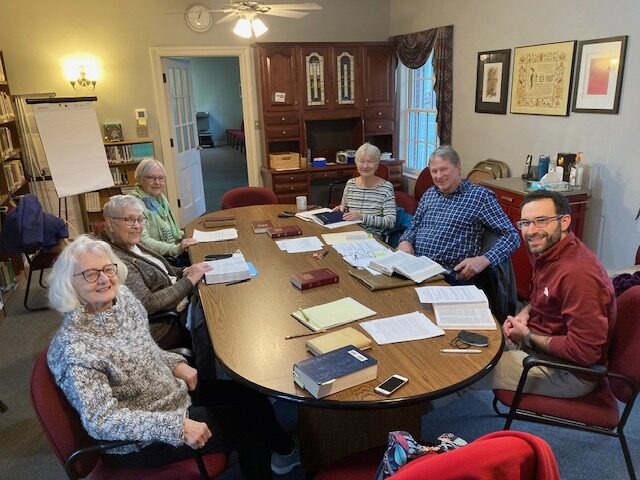In celebration of the 499th birthday of Anabaptism, John Roth reports on development of the Anabaptist Community Bible, which is slated to be ready for readers on the 500th birthday of Anabaptism.
This post is in celebration of the birthday of Anabaptism, which is celebrated on Jan. 21 every year.
For many years (1985-2022), John D. Roth was a professor of history at Goshen College, where he also served as director of the Mennonite Historical Library and editor of The Mennonite Quarterly Review. John has published widely on topics related to Anabaptist-Mennonite history and church life. He is also the founding director of the Institute for the Study of Global Anabaptism at Goshen College and secretary of the Mennonite World Conference Faith and Life Commission. In July 2022, John accepted a new position with MennoMedia as project director of the Anabaptism at 500 initiative. John and his wife, Ruth, are the parents of four adult children and grandparents to five grandchildren. They are active members of Berkey Avenue Mennonite Fellowship in Goshen, Indiana.

One morning, in spring 2022, I woke up with a deep sense of foreboding.
A few months earlier, I had left a job of more than 35 years — a job that I loved — to take on a new role as project director of MennoMedia’s Anabaptism at 500. The assignment envisioned 6 or 7 different projects; but its centerpiece was to be a new study Bible that would somehow embody the spirit of the Anabaptist tradition.
Within only a few months, my initial enthusiasm for the project had bumped up against a healthy dose of realism. Not only was the sheer magnitude of the Bible project overwhelming, especially with its accelerated timetable, but sometimes it seemed as if debates over biblical interpretation and authority in the broader church were certain to doom the project, even before it got off the ground.

Today, nearly two years later, those anxieties have not disappeared altogether. But I’m happy to report that The Anabaptist Community Bible is on track, scheduled to go to the printers early this summer, with an official release date scheduled for Jan. 21, 2025.
Key to the success of the project was a churchwide consultation of Anabaptist-Mennonite pastors, scholars and lay leaders in August 2022 that embodied the community-based approach that has become a hallmark of the study Bible.
Among other things, the gathering prompted a new strategy for gathering three distinct categories of commentary that will appear in the margins of the biblical text. The first group came from more than 60 Anabaptist biblical scholars, who drew on the insights of their academic disciplines to provide introductions to each of the biblical books, along with hundreds of “Biblical Context” notes that will help orient readers within the cultural, linguistic and biblical world of Scripture.
Second, a group of gifted historians agreed to read through the writings of 16th and 17th century Anabaptist leaders, gleaning commentary on specific passages of Scripture. These insights appear in the margins as “Early Anabaptist Witness” notes.
But our most ambitious undertaking was entrusting the third category of commentary — what we are calling “Community Reflection” notes — to ordinary lay readers of the Bible, in the confidence that Scripture is a living text that is accessible to all of God’s people. In the months that followed the August consultation, we sent invitations to 4,000 congregations from a wide variety of Anabaptist faith communities, encouraging them to form Bible study groups and to share their insights on the passages assigned to them. The goal was to cover the entire Bible from Genesis to Revelation.

The response was overwhelming. We set an ambitious goal of 500 participating groups. By spring 2023, when we closed the process, nearly 600 groups had signed up for the project, covering each passage of Scripture at least twice.
The result was a truly amazing trove of commentary — vastly more than could ever be included in the limited space of the margins.
We also relied on the community for several other crucial decisions.

When people worried — with good reason! — that our initial title, The Anabaptist Bible, made it sound as if Anabaptists had received a special revelation from God, we consulted widely across the church and settled on The Anabaptist Community Bible, a title that better captures a fundamental characteristic of the Anabaptist hermeneutical tradition and helpfully describes the unique character of the study Bible we envisioned.
When questions emerged as to whether we should use the NIV or NRSV translation, another consultation, particularly with immigrant congregations, pointed us to the Common English Bible as a “third way.” The CEB is a scholarly translation, not a paraphrase. But it is also highly readable, intended for an 8th grade reading level. In the spirit of the 16th century Anabaptists, this is a truly a “peoples’ Bible,” readily accessible to a wide range of ordinary people.
In the meantime, a small group of Anabaptist artists shared their gifts by contributing 40 original linocut images drawn from biblical stories or texts. Several pastors, theologians and historians contributed essays on themes related to the Bible and biblical interpretation, which will prove useful for small group or Sunday school discussion. And a group of biblical scholars alerted us to the subtle ways that antisemitism can easily creep into the “Christ-centered” hermeneutic favored in the Anabaptist tradition.
The process of editing the enormous volume of additional material — nearly 400,000 words — has been challenging. But now, we are drawing on the gifts of another community of talented editors, designers and proofreaders.

Sometimes, when work on the project seems overwhelming, I take a few minutes to scroll through the photos taken by hundreds of Bible study groups, as they gathered to reflect on their assigned Scripture passages. Those pictures of ordinary people — congregating on Zoom or around tables in homes, church basements and fellowship halls, often accompanied by food and stacks of biblical commentaries, wrestling together with the meaning of these ancient texts — can move me to tears.
Much work remains. But I’m happy to report that the project is on schedule for delivery to the printers early this summer, so that you can read it cover-to-cover starting Jan. 21, 2025!
Thank you for being part of this amazing community effort, one that we hope will rekindle a love for the Bible, renew our commitment to following Jesus and revive the church’s witness to the world!


